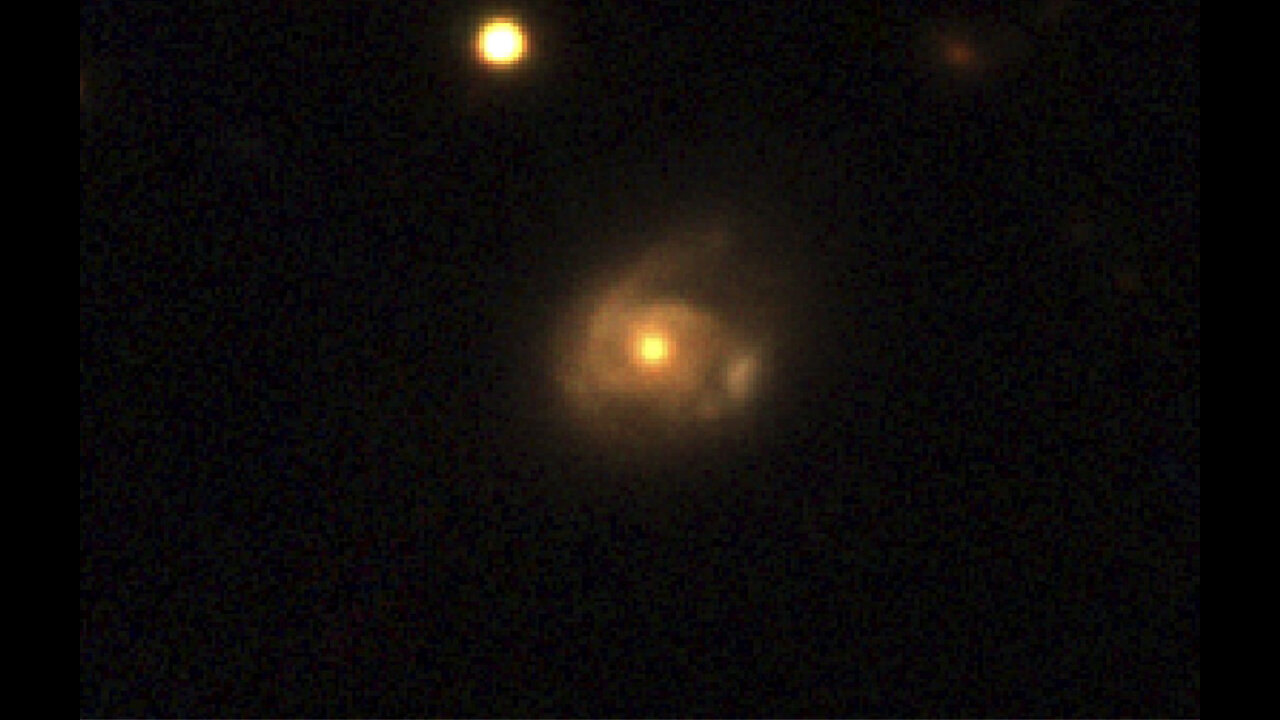Premium Only Content

| Swift Spots | a Snacking | Black Hole | Using a | New Trick |
Using NASA’s Neil Gehrels Swift Observatory, which launched in 2004, scientists have discovered a black hole in a distant galaxy repeatedly nibbling on a Sun-like star. The object heralds a new era of Swift science made possible by a novel method for analyzing data from the satellite’s X-ray Telescope (XRT).
When a star strays too close to a monster black hole, gravitational forces create intense tides that break the star apart into a stream of gas. The leading edge swings around the black hole, and the trailing edge escapes the system. These destructive episodes are called tidal disruption events. Astronomers see them as flares of multiwavelength light created when the debris collides with a disk of material already orbiting the black hole.
Recently, astronomers have been investigating variations on this phenomena, which they call partial or repeating tidal disruptions.
During these events, every time an orbiting star passes close to a black hole, the star bulges outward and sheds material, but survives. The process repeats until the star loses too much gas and finally breaks apart. The characteristics of the individual star and black hole system determine what kind of emission scientists observe, creating a wide array of behaviors to categorize.
On June 22, 2022, the XRT captured Swift J0230 for the first time. It lit up in a galaxy around 500 million light-years away in the northern constellation Triangulum. Swift’s XRT has observed nine additional outbursts from the same location roughly every few weeks.
Scientists propose that Swift J0230 is a repeating tidal disruption of a Sun-like star orbiting a black hole with over 200,000 times the Sun’s mass. They estimate the star loses around three Earth masses of material on each pass. This system provides a bridge between other types of suspected repeating disruptions and allowed scientists to model how interactions between different star types and black hole sizes affect what we observe.
Swift J0230’s discovery was possible thanks to a new, automated search of XRT observations called the Swift X-ray Transient Detector.
After the instrument observes a portion of the sky, the data is transmitted to the ground, and the program compares it to previous XRT snapshots of the same spot. If that portion of the X-ray sky has changed, scientists get an alert. In the case of Swift J0230, astronomers were able to rapidly coordinate additional observations of the region.
-
 LIVE
LIVE
Lara Logan
6 hours agoTHE FIGHT FOR A FREE BRITAIN with Katie Hopkins | Episode 36 | Going Rogue with Lara Logan
656 watching -
 LIVE
LIVE
Jeff Ahern
39 minutes agoFriday Freak out with Jeff Ahern
79 watching -
 16:52
16:52
IsaacButterfield
10 hours ago $0.22 earnedWoke Karens Are Trying to End This Man’s Career
3.7K3 -
 4:09:14
4:09:14
The Bubba Army
1 day agoRaja Jackson Arrested! - Bubba the Love Sponge® Show | 9/19/25
13K1 -
 2:04:42
2:04:42
The Culture War with Tim Pool
4 hours agoDemonic Possession, Exorcisms, And The Soul Of America | The Culture War with Tim Pool
161K131 -
 20:00
20:00
Neil McCoy-Ward
2 hours ago🔥 It's Absolute CHAOS In Europe 🇪🇺 Today...
18.2K5 -
 1:07:41
1:07:41
Steven Crowder
4 hours agoSPECIAL: A Behind-the-Scenes Peek at Some of Our Biggest Productions
218K103 -
 59:40
59:40
The Rubin Report
4 hours agoListen to ‘The View’ Crowd Gasp as Whoopi Admits She Agrees w/ Conservatives on This
67.1K41 -
 1:40:02
1:40:02
The Mel K Show
3 hours agoMORNINGS WITH MEL K Preserving the Home of the Brave 9-19-25
46.4K5 -
 1:56:29
1:56:29
Film Threat
21 hours agoKIMMEL GONE! PLUS REVIEWS OF HIM + A BIG BOLD BEAUTIFUL JOURNEY + MORE | Film Threat Livecast
30.8K3